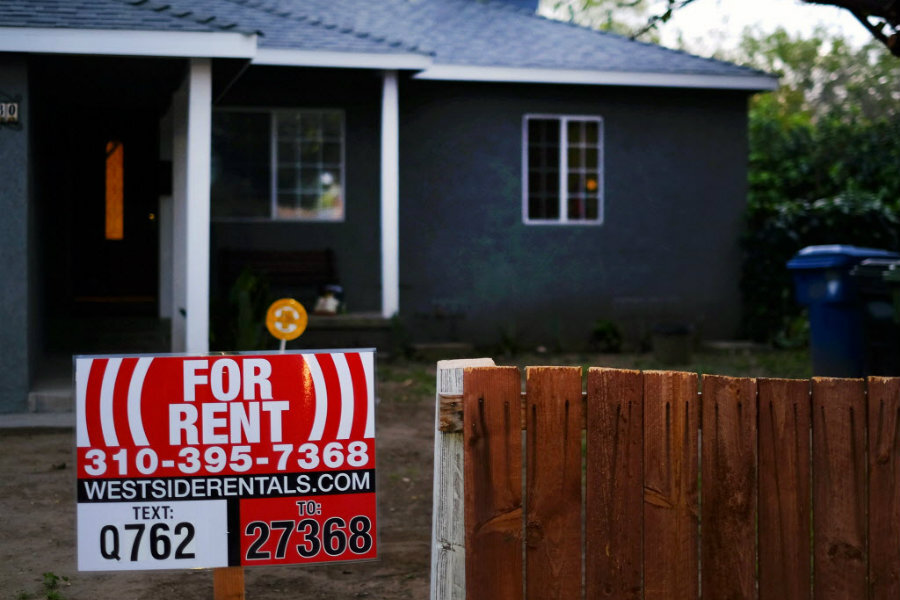How Millennials are dealing with a lack of affordable housing
Loading...
For too many Americans, the gap between minimum wage and the price of decent housing remains intraversible.
That’s according to a new report, published by the nonprofit National Low Income Housing Coalition (NLIHC), that looks at the cost of renting and compares it with wages in each US state. The findings tie in with other studies that highlight how Americans, especially young people, are fighting to keep up with the rising costs of housing.
Still, Millennials haven't give up the struggle, instead coming up with a variety of ways to survive and even thrive.
“Statistically, America’s Millennial generation (of which I am a member), has had the roughest start to its working years in living memory,” The Christian Science Monitor’s Schuyler Velasco wrote, referring to the generation of workers born after 1980.
“Keeping up with skyrocketing housing costs on stagnant wages is just distracting us from reading article after article about how our ability to earn a decent living has been permanently kneecapped by the random misfortune of being born a couple of decades before the worst economic crisis in 80 years,” she added.
The data, to be sure, looks dark.
In 13 states and Washington, D.C., a worker would need to earn more than $20 an hour to afford a decent apartment, according to the NLIHC report. Affordability, based on common industry standards, means that a household is spending 30 percent or less of its gross income on housing.
In Hawaii, for instance, where the average renter’s wage is $14.49 an hour, affording a two-bedroom apartment on a 40-hour work week would require an hourly wage of $31.61 – the highest of any state. Put another way, a worker would have to work 163 hours a week at the state’s minimum wage of $7.75 an hour to afford a one-bedroom apartment.
That leaves “a luxurious five hours a week to sleep, eat or spend time with your family,” the Washington Post’s Ana Swanson noted, though she added that not all workers need two-bedroom homes and that some families have more than one earner.
The situation is mirrored in other states, where, even when the minimum wage is higher than the federal standard of $7.25 an hour, renting prices remain far above affordable.
This is significant because homeownership also remains elusive for Millennials. In 13 metropolitan areas, the typical Millennial is priced out of owning a home, according to a Bloomberg report on the affordability of housing in US cities.
San Jose residents have it hardest, because while Millennials there make a median annual salary of $53,000, they would have to earn an additional $80,000 a year to afford a mortgage in that city, the report found. Bloomberg continued:
That makes places such as New York, where millennials have an earnings gap of just $6,550, seem relatively affordable. But remember that New York's metropolitan statistical region includes places that are outside of the high-priced housing market in and around Manhattan, where $374,350 (the median home value for the metro area) wouldn't even buy you a kitchen.
Many young people in the workforce today “don't have the money for a down payment or can't afford to buy where they want to buy,” Mark Vitner, senior economist at Wells Fargo Securities LLC in Charlotte, N.C., told Bloomberg.
This doesn’t mean, however, that all is lost for the Millennial generation.
Experts are encouraging young people to be proactive in saving and investing their money, and creative in living affordable lifestyles. And some Millennials are doing just that.
In a survey done last year by financial services firm UBS, 45 percent of Americans ages 21 to 36 years old said they they thought saving and living frugally was key to achieving their life goals, compared with 39 percent of other generations. Also, while Millennials are more skeptical of long-term investments, those who do invest are more likely to measure personal success based on their own goals, instead of on how the market is doing.
“They are becoming a generation of savers, having been frightened watching what has happened to their parents during the Great Recession,” Emily Pachuta, head of investor insights at UBS, told The Guardian.
In an effort to find both affordability and authenticity, some young people are choosing to live away from high-priced cities, opting instead for less popular urban locations such as Cleveland, Baltimore, and St. Louis – places that are not only cheaper, but also bring with them a sense of community that may be lost in the big city.
Others have embraced the shared-housing lifestyle, “hacking conventional housing patterns” and living with like-minded, technocentric individuals in large, leased houses.
“[T]here's a good chance we Millennials aren't going to be the lost generation many feared,” the Monitor’s Ms. Velasco wrote.






